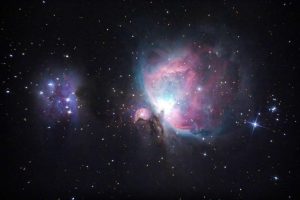NOVEMBER 17, 2020

The universe is similar to a huge human brain, scientists have found.
A new study investigated the differences and similarities between two of the most complex systems in existence, though at entirely difference scales: the cosmos and its galaxies and the brain and its neuronal cells.
They found that while the scale is clearly different, the structure is remarkably similar. In some cases, the two systems seemed more similar to each other than they did to the parts that make them up.
It suggests that vastly different physical processes can lead to very similar complex and organized structures.
For example, the human brains works because of the network of nearly 70 billion neurons that together make it up. The universe is thought to have at least 100 billion galaxies.
In each system, they are assembled together in a complex web or network, spread out in long filaments and nodes that link them up. Those spreading nodes are familiar to pictures of both the universe and the brain, and account for some of the superficial similarities in images.
But in each system, those threads only make up about 30 per cent of the mass. In each, some 70 per cent of the mass is actually made up of parts that appear to be passive: the brain’s water, and the universe’s dark energy.
To dig further into those similarities, researchers compared the way those galactic networks form with sections of the brain. They looked to understand how the matter was spread across the two very different networks.
“We calculated the spectral density of both systems. This is a technique often employed in cosmology for studying the spatial distribution of galaxies”, said Franco Vazza, an astrophysicist at the University of Bologna who worked on the study with University of Verona neurosurgeon Alberto Feletti.
“Our analysis showed that the distribution of the fluctuation within the cerebellum neuronal network on a scale from 1 micrometer to 0.1 millimeters follows the same progression of the distribution of matter in the cosmic web but, of course, on a larger scale that goes from 5 million to 500 million light-years”.
They also examined the ways that the webs of neutrons and galaxies connect up – once again finding noticeable similarities, with the systems seeming more similar to each other than to their component parts. To do so, they compared the average number of connections between each of the nodes, and how they cluster.
“Once again, structural parameters have identified unexpected agreement levels. Probably, the connectivity within the two networks evolves following similar physical principles, despite the striking and obvious difference between the physical powers regulating galaxies and neurons”, said Alberto Feletti.
“These two complex networks show more similarities than those shared between the cosmic web and a galaxy or a neuronal network and the inside of a neuronal body”.
A paper describing the findings, ‘The quantitative comparison between the neuronal network and the cosmic web’, is published in the journal Frontiers of Physics.
Courtesy/Source: Independent

































































































